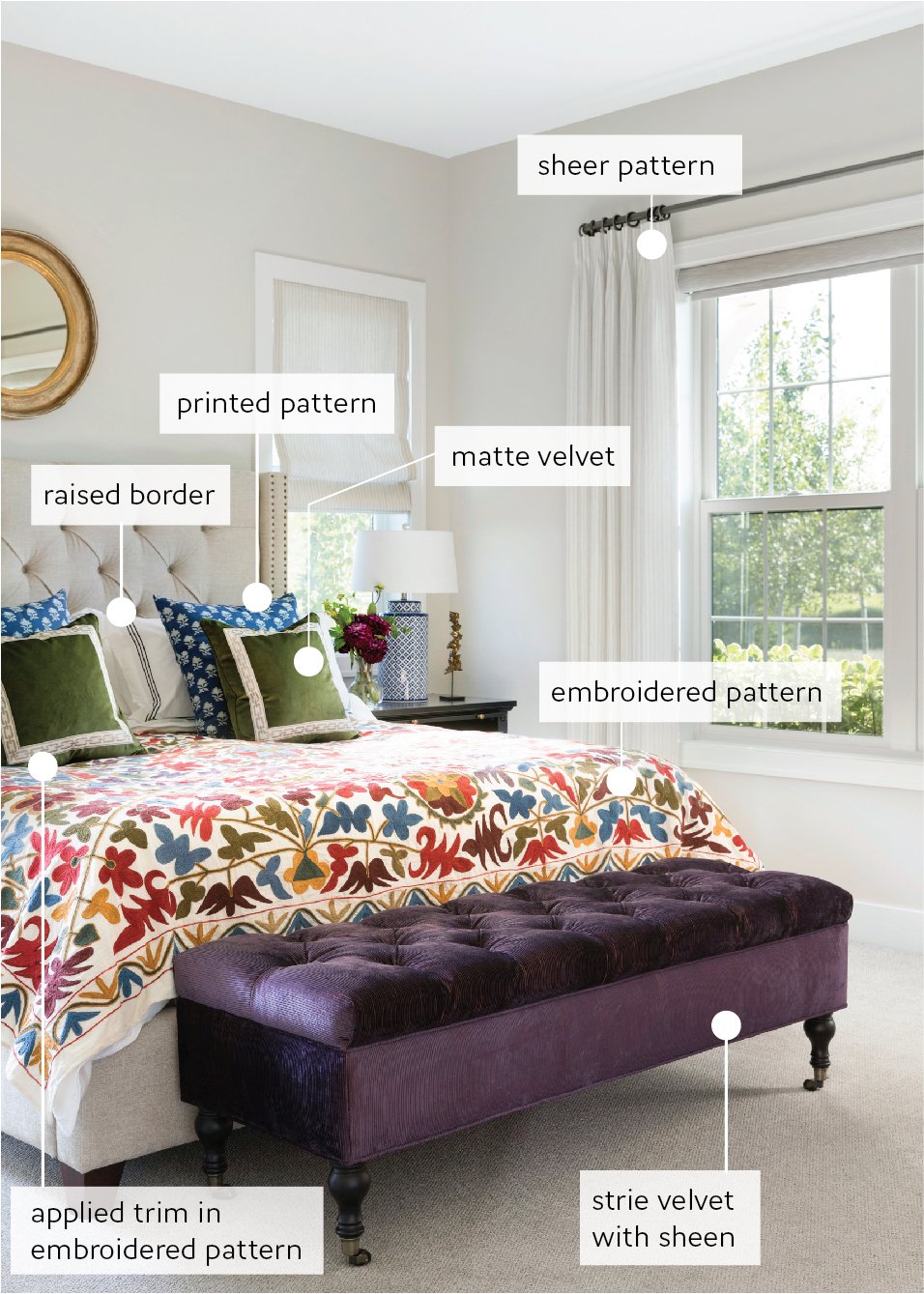Understanding The Mix: Fabric Edition
When I was 15, I had the amazing opportunity to spend a few weeks in France on a school trip. My mom and I set to work building a travel wardrobe. We identified the practical pieces that would work (breezy floral skirt, khaki trousers, etc.) and then figured out what was missing and created our list. We picked up a bunch of t-shirts in various solids to mix in, and off I went.
I don’t know how this happened exactly, since my mom is super stylish and a pretty great builder of wardrobes, but when I got to France I realized I had lots of pieces, but despite our efforts, I did not have outfits. Why? Because while the tops and bottoms may have been complimentary in color or print, that’s not all there is. There may have been issues with proportion: a baggy top and baggy pants, Olson twins aside, is not a great combination. There may have been issues with fabric: a plain cotton top wants a textured bottom, and vice versa.
How it Applies to Interior Design
This is just one more way that our design work is a careful calibration. Each fabric in a room needs to be not only the right color, but the right weight, the right fiber, the right hand. How does it feel? How will it drape? Will the pattern make sense with the shape of the back or the curve of the arm? Will it hold the folds of a roman shade? Will it wrinkle? Do we want it to?
I’ve read a lot of blog posts and magazine articles about mixing fabric patterns. It goes something like this: combine a large scale and a small scale, a geometric and something more organic with movement; throw in a stripe and balance it all with solids. I don’t disagree with this thinking, but this is an approach that literally lacks dimension. In this formulation, if all of the above are prints, where a color and design is printed on a length of fabric, the outcome will be flat. One of the geometrics should be embroidered; perhaps the stripe is woven. Maybe the stripe is printed, but on a cotton that is polished, giving a sheen that the chunky linen next door does not have.
Textile Mixes
Plus Material Finishes
All of that is just the fabrics in the room. There’s a similar level of complexity in other furniture finishes, as well. In the below, we called out some of the material textures we layered in on the furnishings.
There’s so much to think about. It is all of these micro decisions that make our rooms feel balanced.




